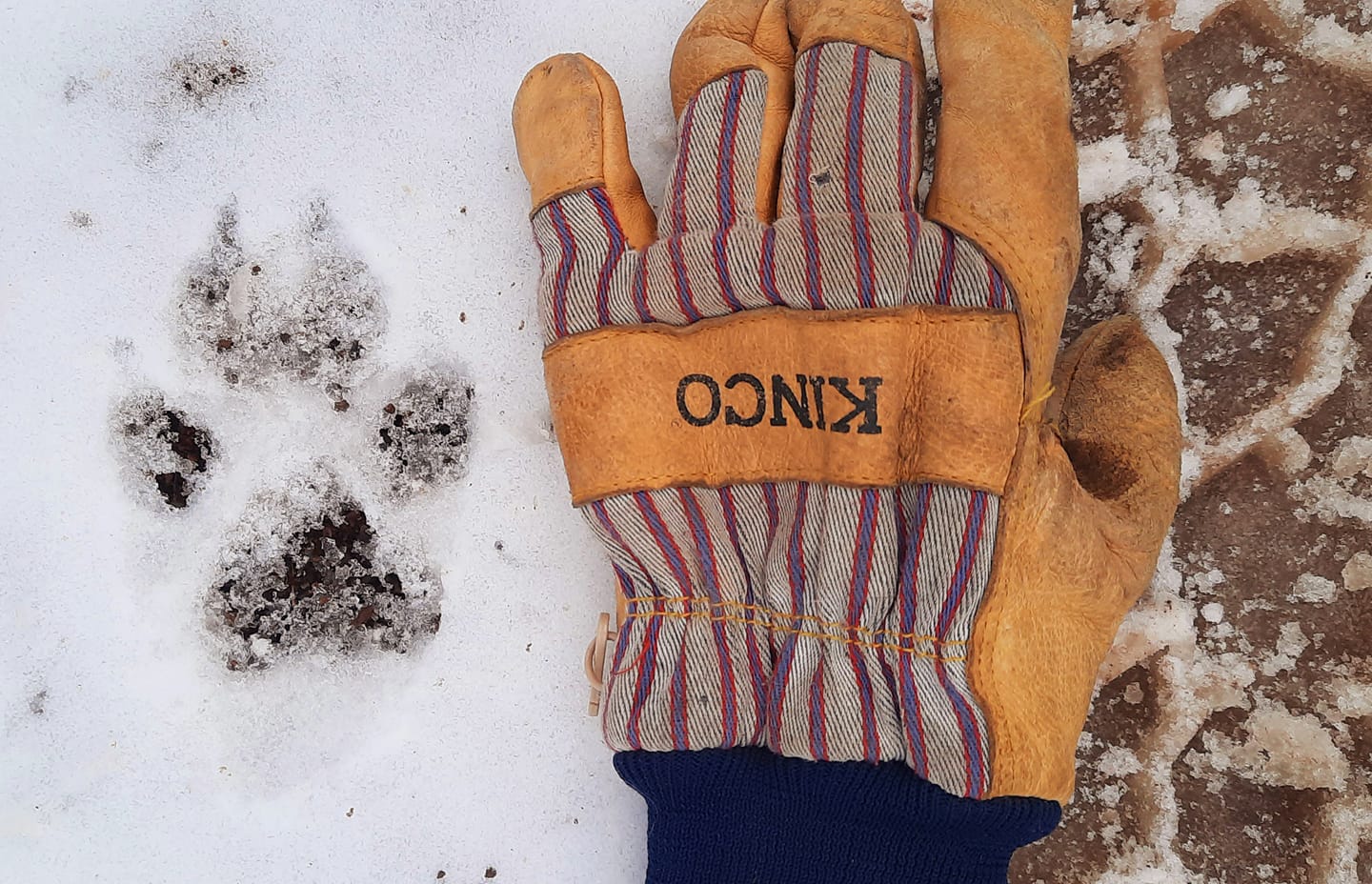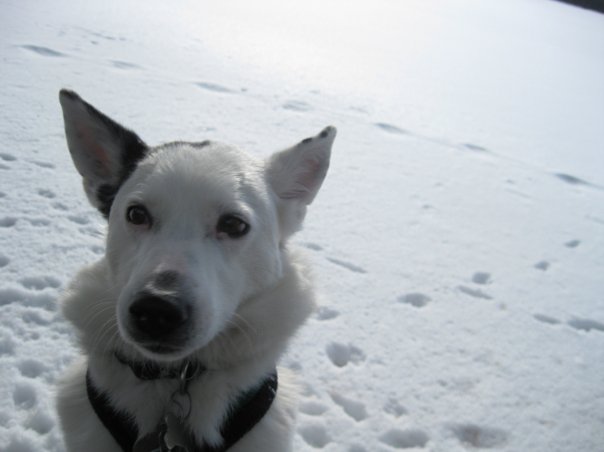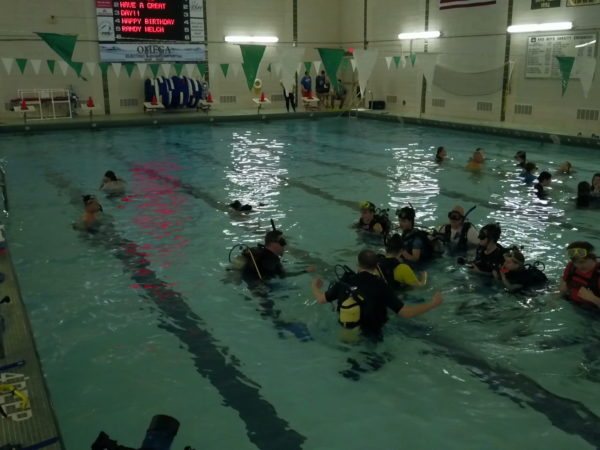
“Nibi Chronicles,” a monthly Great Lakes Now feature, is written by Staci Lola Drouillard. A direct descendant of the Grand Portage Band of Ojibwe, she lives and works in Grand Marais on Minnesota’s North Shore of Lake Superior. Her two books “Walking the Old Road: A People’s History of Chippewa City and the Grand Marais Anishinaabe” and “Seven Aunts” were published 2019 and 2022, and she is at work on a children’s story. “Nibi” is a word for water in Ojibwe, and these features explore the intersection of indigenous history and culture in the modern-day Great Lakes region.
There is violence in wolf country. Last fall, eight wolves were trapped and killed between the towns of Ely and Babbitt, in Northeastern Minnesota. A response to pet predation, after two dogs were killed, one injured and one chased but not harmed. The U.S. Fish and Wildlife Service set up a trapping zone, captured and euthanized the wolves, which are a federally protected species that is considered “threatened.” For this reason, state-funded killing of wolves is rare.
Anthony Bermel, the DNR Conservation Officer involved, told the Ely Echo Newspaper, “If somebody calls in and just says, ‘hey, they’re hanging around, I’m concerned about my pets or my kids or my chickens’ there’s nothing we can do. If somebody has an attack or a kill on a dog or livestock, then we and or the USDA Wildlife Services Division will investigate it.”
If you follow anecdotal reports, there has been an uptick in human-wolf conflict in northern Minnesota. Deer hunters were quick to blame wolves for a disappointing deer hunt, even though over 31,000 deer were harvested in 2023, slightly down from the previous year. Verified wolf conflicts in 2022 were down 19% from the previous year. Yet, there is a loud call to de-list wolves, a political bonfire that often heats up during a contentious election year.
The Story of Katagon
Closer to home, a wolf pack recently killed a beloved guard dog on the Gunflint Trail. In a separate incident, a cabin owner reported that a lone wolf scavenged a cooler of food that was buried in the snow. The well-fed wolf, was reluctant to leave.
The loss of a pet is something that my partner and I experienced first-hand. It was New Years Eve, 2012. Our “pack” of two dogs were with a dog-sitter when they ran into the woods near our home. The older dog Genna, managed to escape, but Katagon, our protector, did not come home. The next morning, I followed his little tracks into the woods, where they got mixed up with the enormous tracks of two or three wolves. It happened on a trail that our neighbor cut into the woods that fall, creating easy passage for wild animals and humans.
It’s common sense that trails and roads concentrate human-animal contact, and bring wild animals closer to our homes and cabins. We also have neighbors who feed deer, which is also a welcome mat for those who prey on the deer. The heartbreak of losing a beloved dog in such a violent way, still haunts us, many years later.

Katagon. (Photo by Cathy Quinn)
The hardest thing to accept is the role that we played in what happened. Our domestic pets are not equipped to live in this wild place and are no match for wolves. We are now careful to keep our dogs leashed and we built a backyard fence. It’s like adapting to city life hazards. We don’t let our dogs run loose near roads, so why would we let them roam in wolf territory? But even after losing Katagon, I can’t find it in my heart to blame the wolves. He should never have been in that situation, and we were naïve to believe that a dog’s freedom was more important than his safety.
Wolves are the Chosen Ones
In The Wolf’s Trail, Fond du Lac Ojibwe writer, Thomas Peacock, tells the creation story of Anishinaabe Aki (Earth) from the perspective of wolves—ma’iinganag. The book starts with a story from Uncle Zhi-shay, an elder member of the pack:
“I am of the wolves from the hills that overlook the river that flows through Nagahchiwanong (Fond du Lac), the bottom of the big lake, Gitchi Gumee, the one that bears the likeness of a wolf.”
From this vantage point, the eye of the wolf is Minong—Isle Royale. The ears are Nipigon and Black Bay. The tip of the nose is Onigamiising—Duluth. From this perspective, our entire region is imprinted by the wolf. In the story, ma’iingan was chosen to accompany the first human being on a naming adventure across earth a long time ago—mewinzha. A wolf was the natural choice because wolves and human beings have so much in common.
“This is what I know about wolves and humans,” says Zhi-shay. “Both place high value on family… We belong to something greater, the tribe or pack. Both humans and wolves need friendship and lifelong bonds with family—we excel only when we cooperate. And we struggle physically, emotionally, psychologically, and spiritually when we are alone.”

Ma’iingan. (Portrait by Donovan Dahmen, Grand Portage Ojibwe)
Peacock writes that humans and wolves are parallel beings who walked with purpose together in “the naming of all creation.” After their journey, the Creator said: “Now each of you will go your separate ways. Ma’iingan, you will partner and multiply. Your packs will run forever through the beautiful fields and forests. Your songs will honor the whole of the earth and sky. To honor your work, and to remember your kinship with humans, the face of Gitchi Gumee will bear your likeness.”
It seems to me that our human kinship with canines stems from this early agreement. Because what are dogs if not domesticated wolves in a variety of shapes and sizes? As Zhi-shay points out, dogs use “the keen observation skills they inherited from their wolf ancestors to understand humans better than any other creature…”
My wise friend Donovan added that even though human beings and wolves parted ways, our spirits remain “forever interwoven,” and that wolves teach us about balance and a healthy ecosystem. For mainstream society, myths about “the big, bad wolf,” and a state of denial about how human imbalance impacts wolf country, create a fear-driven environment that will always end badly for ma’iinganag. As for violence against wolves, the impulse to solve the human-wolf conflict with an “eye-for-an-eye” approach to justice is a solely human construction. One that disrupts packs and often makes things worse over time. While it’s true that people, dogs and wolves will all kill for food or territory, the only species that acts out of hatred or the thrill-of-the-kill are human beings.
After the eight wolves were killed, the International Wolf Center in Ely shared some people-centered advice: “avoid areas where wolves have been sighted until no additional wolf observations/incidents occur. Keep dogs on a leash. Don’t try to intervene if a dog is actively being attacked. Carry bear/pepper spray.” And finally, “Don’t be tempted to feed wolves, even if they are looking underfed.”
Anishinaabe star watchers equate the trajectory of earth with a wolf’s path—Ma’iingan Mikan. It’s the great circle that creates the seasons, the sun, stars, and phases of the moon. Our place in this great circle is one of a humble traveler, on a journey that would have ended long ago, if it weren’t for the gifts and teachings of the animal beings that helped us along the way. Because wolves and humans are parallel beings who share a forever, spiritual connection, what ends badly for the wolf will also end badly for the human. This is just one of the lessons Zhe-shay asks us to remember.
Catch more news at Great Lakes Now:
Nibi Chronicles: A portal to the Burt Lake Band’s violent expulsion
Nibi Chronicles: Restoring what was lost in translation, one place name at a time
Featured image: Wolf tracks. (Photo by Cathy Quinn)




